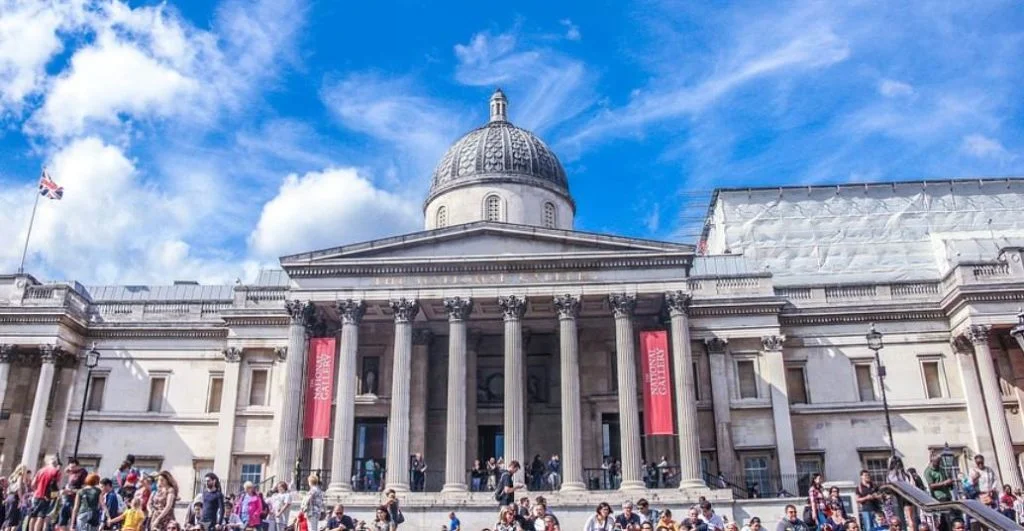Most of the images we see from Tiziano Vecelli (1488-1576), a Renaissance artist better known by his nickname Titian, are those of an old man.
That’s mainly because he lived a very long life and many of his most famous paintings were produced when he had reached a respectable age.
His talent, however, was already clear from a young age as well. This is emphasized by the incredible level of quality in his earlier works.
In this article, you’ll discover the most interesting facts about A Man with a Quilted Sleeve by Titian, one of the Italian artist’s most influential portraits.
1. It was painted when the artist was in his early twenties
Until the 20th century, it was believed that Titian was born in the early 1470s. This meant that it was accepted that he passed away at the age of 99.
Although the exact date of his birth remains unknown, it’s agreed today that it was anywhere between 1488 and 1490.
He was born in a small town called Pieve di Cadore in the Veneto region of northeastern Italy.
He started his training as an early teenager in Venice and learned the trade of painting from both Gentile and Giovanni Bellini, both renowned artists at the time.
A Man with a Quilted Sleeve is one of the first known portraits by Titian and was completed around 1510. Ten exact date remains unknown so the estimate is based on its style.
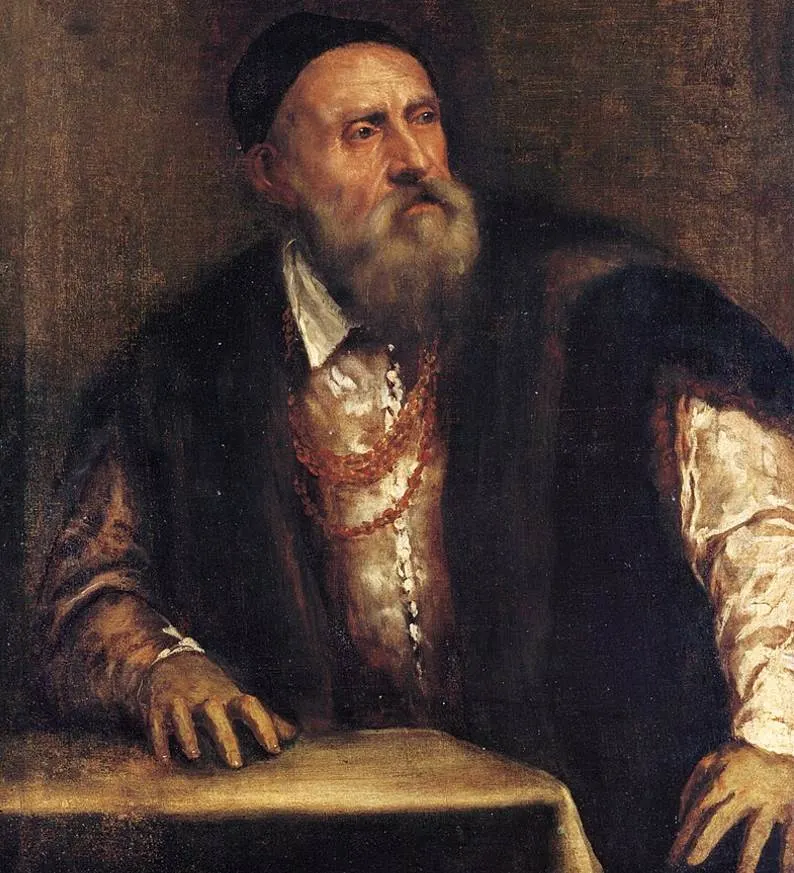
2. The identity of the sitter has been a mystery for centuries

The painting has been titled “Portrait of a Man” and “The Man with the Blue Sleeve,” both indications that the identity of the sitter was unknown for many centuries.
Multiple suggestions have been made and art historians long agreed that it was a portrait of Italian poet Ludovico Ariosto (1474–1533). Some art historians also believed it to be a self-portrait by the artist.
Today, the painting is referred to as “Portrait of Gerolamo (?) Barbarigo.” This means that the identity of the sitter might have been one of the artist’s friends of the aristocratic Venetian Barbarigo family.
The notion that Titian was already a well-respected artist in Venice at the time is only confirmed by this. The Barbarigo family delivered to Doge’s (the highest position in the Republic of Venice) between 1485 to 1501.
Gerolamo became thirty years old in 1509 which was the age to hold an important political position. This might have been a motive to commission a portrait.

3. Titian used a special technique to invite the viewer into the painting
One of the first things you’ll notice in this painting apart from the penetrating gaze of the sitter is that Titian included a barrier between the viewer and the sitter.
This was a common technique in early Renaissance portraits. He added an extra dimension to it by projecting the magnificently painted sleeve of the sitter just beyond this parapet.
This was a technique devised by Giorgione (1477-1510), the mysterious Venetian master who produced some f the most influential Renaissance paintings in history.
4. The signature on the parapet might not mean what is obvious
Titian painted the initials T and V on the parapet. These were added in such a way that they almost appear to be carved into the stone barrier.
At first glance, this appears to be merely the initials of the artist who was named “Tiziano Vecelli.” Additional research using infrared technology has remarkably uncovered an extra V.
This mysterious VV abbreviation was added to multiple portraits that were completed around this tie and might mean “Virtus Vincit (Omnia)” or “Virtue Conquers All.”
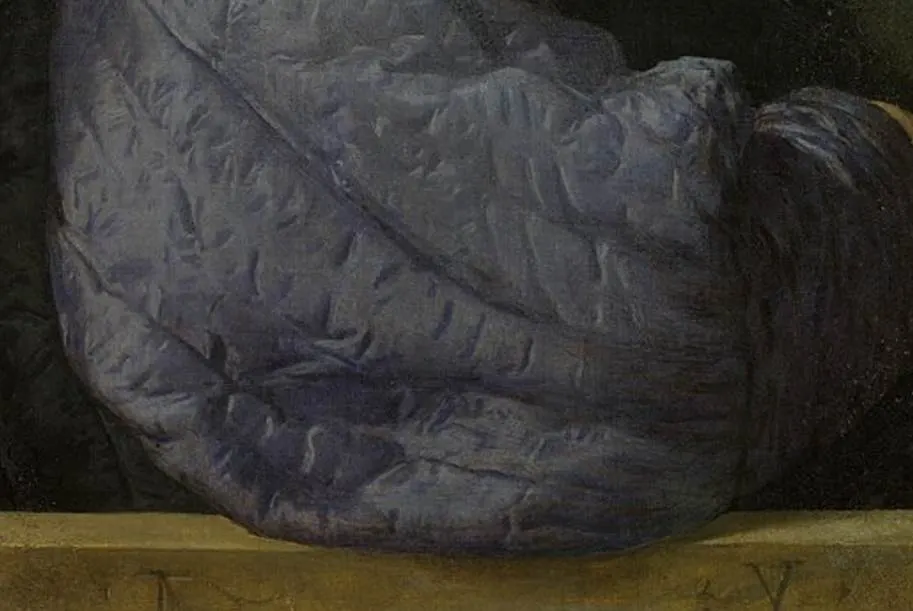
5. It’s considered to be a very important portrait of the Renaissance
Renaissance portraiture in Venice emerged around the same time as the Renaissance became the dominant art movement in the 15th century in Florence.
Giorgione and Titian were innovators at the time by resolving the main compositional problem. The ideals of the Gothic artists, who painted idealized versions of their subjects, were replaced by the intrinsic realism that defined the Renaissance.
The daring gaze and the raised eyebrow of the sitter add mystery to the work. The sitter also turns his body towards the viewer which increases the sense of drama in what was nothing more than a simple portrait.
The painting had a major influence on future artists and skyrocketed Titian’s career in Venice. Contemporary critics held his work in higher regard than that of his master Giorgione, which was quite an honor.
Shortly after he completed A Man with a Quilted Sleeve he produced another early masterpiece of portraiture. This painting is titled “Portrait of a Lady or “La Schiavona” and depicts an unknown aristocratic woman.
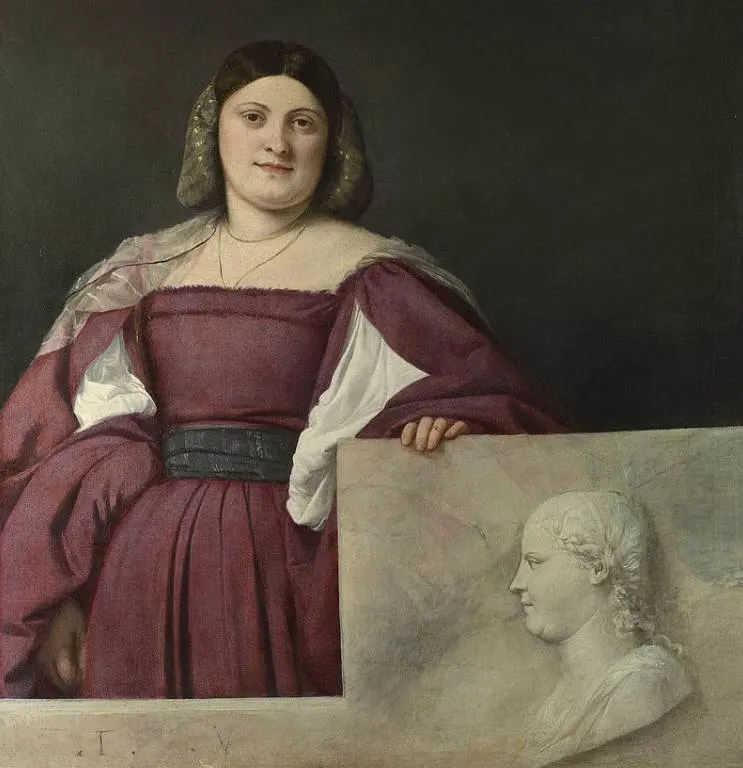
6. The composition was once copied by a famous Dutch painter
The painting’s history after it was completed remains a mystery, but it somehow ended up in Amsterdam in the 17th century. It was owned by an art dealer in the city named Alfonso Lopez in 1639.
Here, one of the most famous Dutch artists in history must have seen it because Rembrandt van Rijn (1606-1669) copied the composition of the work in one of his self-portraits.
One of Rembrandt’s paintings titled “Self-portrait at the age of 34” (1640) was influenced by Titian’s masterpiece.
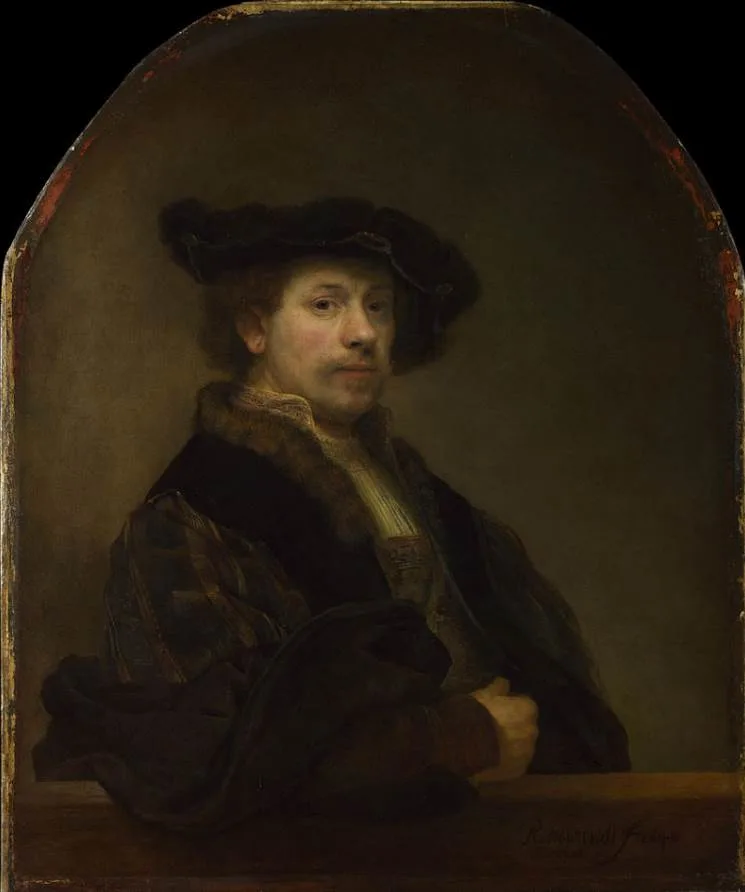
The Baroque master was also a renowned etcher and is generally considered to be one of the most talented etchers in history.
He already produced an etching titled Self-portrait leaning on a Sill in 1639 which borrowed the composition from Titian’s painting.

7. How big is A Man with a Quilted Sleeve by Titian?
Titian produced numerous immense works of art that are now on public display in museums all around the world. This particular work is far from his largest work which is not unusual for a portrait.
A Man with a Quilted Sleeve is an oil on canvas painting that has dimensions of 81.2 × 66.3 centimeters (32 × 26.1 inches).
8. Where is the painting located today?
Just like the mysterious gaze of the depicted man, the painting’s provenance in the first centuries of its existence remains somewhat of a mystery.
It was in Amsterdam in 1639 and was somehow sold in Paris in 1641. It’s possible that Anthony van Dyck acquired it for King Charles I of England and it was brought to England in the 1640s.
By 1824, it was part of the collection of John Bligh, 4th Earl of Darnley, and it hung at Cobham Hall in Kent. It was exhibited at various events throughout the 19th century, including at the Royal Academy and the Art Treasures Exhibition in Manchester in 1857.
Sir George Donaldson bought the painting for £30,000 in 1904. He eventually sold it to the National Gallery in London for the same price, which is the equivalent of well over £2,500,000 today.
Today, you can still admire the painting at the National Gallery, one of the most popular museums in the world!
